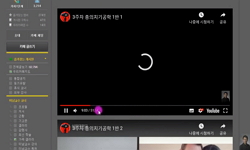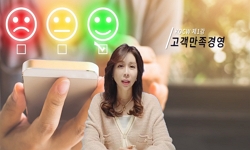Consumers often act impulsively when making internet purchases. Triggered by easy access to products, lack of social pressure, and absence of delivery impediments, impulse buying frequently occurs in the context of internet shopping. This study tests ...
http://chineseinput.net/에서 pinyin(병음)방식으로 중국어를 변환할 수 있습니다.
변환된 중국어를 복사하여 사용하시면 됩니다.
- 中文 을 입력하시려면 zhongwen을 입력하시고 space를누르시면됩니다.
- 北京 을 입력하시려면 beijing을 입력하시고 space를 누르시면 됩니다.

인터넷 쇼핑몰에서 패션제품의 충동구매와 만족에 관한 한국과 중국 간 비교분석 = Research : Comparative Analysis Between Korean and Chinese Students in regards to Fashion Product Impulse Buying and Internet Shopping Satisfaction
한글로보기https://www.riss.kr/link?id=A100266878
- 저자
- 발행기관
- 학술지명
- 권호사항
-
발행연도
2014
-
작성언어
-
- 주제어
-
KDC
500
-
등재정보
KCI등재
-
자료형태
학술저널
- 발행기관 URL
-
수록면
879-887(9쪽)
- 제공처
-
0
상세조회 -
0
다운로드
부가정보
다국어 초록 (Multilingual Abstract)
Consumers often act impulsively when making internet purchases. Triggered by easy access to products, lack of social pressure, and absence of delivery impediments, impulse buying frequently occurs in the context of internet shopping. This study tests the structural equation model of the impulse buying process for fashion products when internet shopping and examines impulse buying process differences between Korean and Chinese consumers. A total of 985 usable questionnaires were obtained from college students. Data were analyzed by structural equation model analysis using a correlation matrix with a maximum likelihood by AMOS 21.0. Results showed that increased internet browsing by consumers resulted in more impulse buying as mediated by the urge to buy; in addition, more impulse buying by consumers resulted in a higher consumer satisfaction experience. Pure impulse buying created more important antecedents of satisfaction than the promotion-oriented impulse buying. Impulse buying showed a high similarity between Korean and Chinese consumers; however, increased influence from promotion activities resulted in more fashion product impulse buying for Chinese consumers versus Korean consumers. We confirm that one of the outcomes of the impulse buying process is impulse buying product satisfaction. Korean and Chinese consumers also present similarities and differences in fashion product impulse buying. A managerial implication is discussed for retailers of fashion products to develop strategies to increase consumer browsing and subsequently trigger impulse buying accompanied with consumer satisfaction.
동일학술지(권/호) 다른 논문
-
대학생의 대인관계성향이 외모관심도와 외모관리행동에 미치는 영향 연구
- 한국의류산업학회
- 이현옥 ( Hyun Ok Lee )
- 2014
- KCI등재
-
소비가치가 외모관리행동에 미치는 영향 -차별적, 물질적, 실용적 가치를 중심으로-
- 한국의류산업학회
- 김인숙 ( In Suk Kim )
- 2014
- KCI등재
-
패션 브랜드 이미지 기반 SNS가 플로우, 브랜드 태도에 미치는 영향 : 즐거움 감정의 매개변수를 중심으로
- 한국의류산업학회
- 고전미 ( Jeon Mi Ko )
- 2014
- KCI등재
-
아동후기 비만여아의 상반신 원형 설계 - iVirds 3.0 PB 및 iVirds 3.0 DS 프로그램 적용-
- 한국의류산업학회
- 임지영 ( Ji Young Lim )
- 2014
- KCI등재





 ScienceON
ScienceON KISS
KISS






